Challenges Abound For Snowmobile Executives
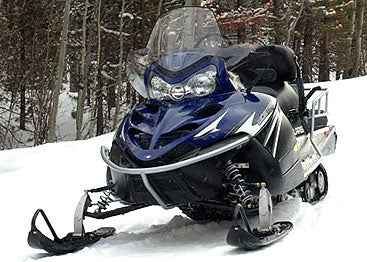
Snowmobile executives have weathered many storms
This is the normal doldrums of snowmobiling. It’s a time when not much is happening and we tend to occupy ourselves with ‘what ifs’.
For instance, what if you were a snowmobile-marketing executive? Coming off last season’s return to winter and better than average snowfalls for the first time in nearly a decade, you’d think sled execs would be buoyant. In fact, the leaders at both Polaris and Arctic Cat anticipate that their companies will grow in the fiscal year ahead.
Indeed, according to Cat’s leadership, the Thief River Falls, Minnesota-based powersports manufacturer projects profit and sales above current Wall Street predictions in its return to profitability in fiscal 2009. Company executives anticipate greater snowmobile revenue in 2009 as a result of last year’s efforts to lower production levels that brought them more in line with retail demand.
Projecting Growth
Additionally, Arctic Cat looks for international ATV sales growth and an increase in demand for its Prowler UTVs to add a small increase in otherwise flat domestic ATV sales.
Arctic Cat feels that the recent banner snowfalls bode well for increasing snowmobile sales and expects that demand for sleds and related accessories and apparel will carry a return to profitability.
As previously reported here, at its annual shareholders meeting Polaris was enthusiastic about its near-term and long-term future. The company cited international sales growth, new military contracts and the popularity of its Ranger and RZR UTV models as sparking increased profitability.
The bottom line is that all of the sled makers, especially the two US-based makers, are very cognizant of the impact international sales have on their end-of-year corporate financials. With more than 35,000 units sold outside North America last year, you can see why this market holds interest. US sled sales were just under 80,000 units and Canada accounted for just over 45,000 units. Now you can understand the reason for creating new sleds for the international market.
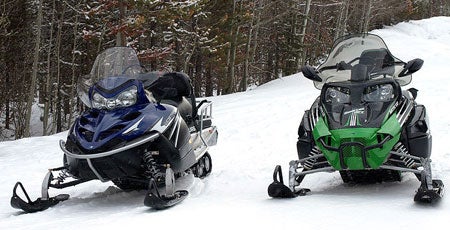 Polaris and Arctic Cat created new-for-2009 models reflecting the growing importance of the international market.
Polaris and Arctic Cat created new-for-2009 models reflecting the growing importance of the international market.We’re buying into the growth from international markets as both companies are aggressively selling their all-terrain models into a surging European ‘quadricycle’ market. That market is a bit complicated due to various countries requiring slightly different modifications to the US-built ATVs. These exported ATVs were designed for off-road use in the US and Canada, but can be outfitted for on-road usage in Europe, leading to a new and growing market for the US ATV manufacturers. Hence, the excitement about international sales by Polaris and Arctic Cat.
International Models
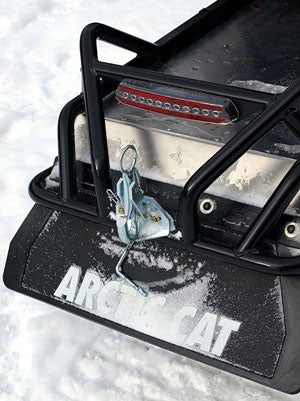 The ‘Siberian’ marketplace requires sleds like this Arctic Cat Bearcat with tow-ability that can traverse vast amounts of snowy terrain.
The ‘Siberian’ marketplace requires sleds like this Arctic Cat Bearcat with tow-ability that can traverse vast amounts of snowy terrain.In addition, there is a new and hungry international market for ‘sport-utility’ snowmobiles, hence the appearance of Artic Cat’s all-new Bearcat Z1 XT with a 1056cc 4-stroke twin and Twin Spar chassis. Polaris looks for increased sales into this emerging ‘Siberian’ market with its own Widetrak IQ with 4-stroke power and go-anywhere tractability. Ski-Doo added a totally revamped machine for this market that features an all-new REV-XU chassis.
Even with the good news of international sales growth, snowmobile company executives must frequently feel like one of those old Bozo the Clown Bop bags from childhood. Every time they take a blow and fall back they bop up only to take another hit. This time the hit comes in US$4 per gallon gasoline.
The Fuel Challenge
Just when the sled makers thought it would be safe for snowmobilers to get back on the trails, along comes this challenge. In reality, it won’t cost all that much more to put 10-gallons of gasoline in your sled this coming winter than last year. It’s going to be the psychological filling of the pickup or SUV to haul your sleds to a distant destination that may impact snowmobilers, many of whom may already have been hit with decreasing home equity. Tighter credit may slow retail sales of sleds and other powersports products. These are real issues that the snowmobile marketers have to face.
Back in the 1970s, during the first round of oil-related challenges, a number of snowmobile manufacturers dropped out. Poor snow years, two oil shortages and lowered consumer confidence led companies like John Deere, Kawasaki, Moto-Ski and lesser names to call it quits in the sled business so they could focus on their core competencies (Sorry, I love that MBA phraseology for ‘basic business’.).
Less Than $100 More
What does $4 per gallon cost a snowmobiler headed to Eagle River, Wisconsin for the annual World Championship Derby? If that snowmobiler is making a round trip from the Chicago area, he would spend about $250 dollars for the round trip if his truck managed 12 miles per gallon. A snowmobiler coming from Minneapolis, Minnesota would use about $170 worth of fuel. Compared to last season, the overage in fuel costs would be less than $100. Of course, if you watch the talking heads on CNN and Fox News you probably figure you can’t afford to leave your house.
Figure that this oil challenge differs significantly from the 1970s. Yes, fuel prices are higher. They were relatively higher in the 1970s, too. The key difference is that back then, if you could get gasoline, you had to wait in long lines to fuel up — on odd or even days of the week! Today, you can get as much $4 per gallon fuel as you need. You can get fuel to go snowmobiling. Back then, it was rationed.
Still, today’s snowmobile executives are fighting a public perception of high prices that may cut into powersports advocates cutting back. Of course, we can beat the system and save on fuel costs by riding motorcycles. Even a big old Harley Hog gets 40-plus mpg — and it’s so much to ride you might pass up working and head out on a road trip. Sorry, boss!
Reality Pricing
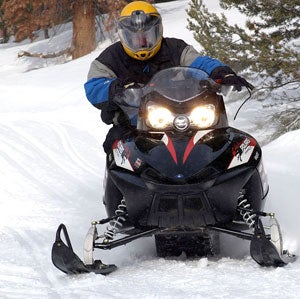 To cushion the reality of new sled pricing, Polaris offers a ‘value’ line that includes the 2009 550 IQ Shift.
To cushion the reality of new sled pricing, Polaris offers a ‘value’ line that includes the 2009 550 IQ Shift.If sled executives are driven crazy by the challenges they face, know this: most Minnesota-based snowmobile marketing executives have offices no higher than two stories. It’s a safe bet they won’t go too crazy. After all, sled sales were up last year. Most of the sled makers reined in their production the last two seasons to balance inventories at dealer and consumer levels. The bulk of noncurrent sled inventory is under control, which leaves sled execs with a new challenge: How will the reality of ‘real’ sled prices affect the snowmobiling consumer?
For the past few seasons, we consumers have had a good deal as we could get closeout pricing on many noncurrents. With less backlog of carry over models, we are now faced with paying new sled prices. Polaris answered that challenge with its line of ‘value’ Shift snowmobiles. This expanded model line up now runs from a 550cc fan-cooled model to long-tracked models for deep powder riders.
Looking back on a long tenure in ‘snow-biz’, it is easy to see that snowmobile-marketing folks have always faced new opportunities and challenges brought on by high fuel costs, poor snow years, and overcrowded inventory. So, far they have managed to make a good go of the sled business that has resulted in us all enjoying better and more efficient products each winter. We expect more of the same. That’s why Arctic Cat and Polaris expect to see their profit pictures improve now and into the future. These sled executives are a tough and savvy breed.




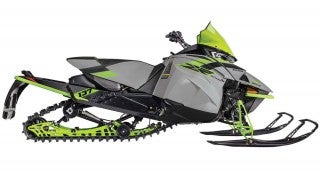



 Your Privacy Choices
Your Privacy Choices